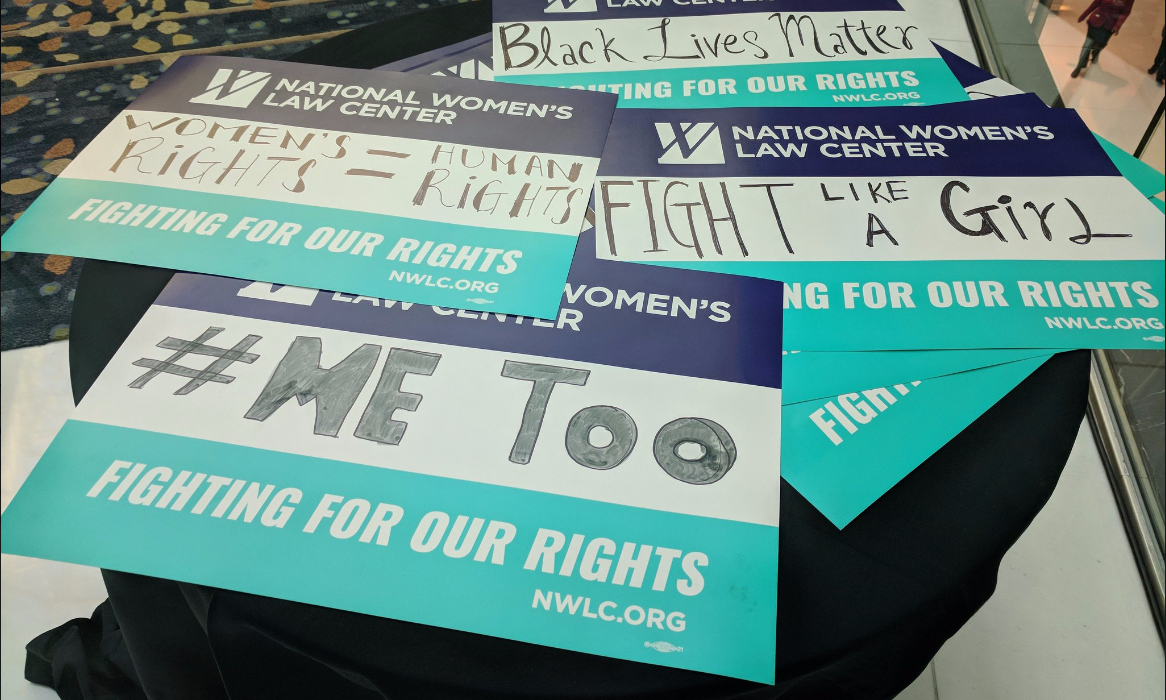Abortion rights, women of color, and LGBTQIA+ people are under attack. Pledge to join us in fighting for gender justice.
Can We Rewrite the Shameful History of Undervaluing Child Care Workers?


As Women’s History Month draws to a close, we want to recognize child care workers.
Why? Because child care workers are an essential, but often left behind, part of our economy — and because women, disproportionately women of color and immigrant women, make up 94 percent of the child care workforce.
Child care workers are responsible for providing safe, nurturing environments for children while parents work or go to school. Despite the importance of their work, child care workers are too often underpaid and stressed, affecting their ability to support their own families and to provide quality care to the children they serve. Typical wages for child care workers are less than $11 an hour — pay that leaves more than one in six women who are child care workers living below the poverty line. Poverty rates are even higher for women of color in the child care workforce, especially those who are supporting children of their own. In one survey of early childhood teaching staff, nearly three-quarters expressed worry about having enough money to pay their bills, while almost half said they were worried about having enough food for their families. Low wages also make it challenging for child care providers to recruit and retain quality workers, undermining the stability and quality of care.
This, unfortunately, isn’t a new issue. The care work that women, and especially women of color, perform has been undervalued in the United States for centuries — often precisely because it is women, and especially women of color, who do it. As Paula England, a sociologist who has spent decades studying gender wage gaps, explains, it seems that employers—and our culture at large — assume that “if jobs are done by women, they cannot be worth much.” And England has found that there is a wage penalty for care work, even compared to other female-dominated jobs — a penalty that England and her colleagues find to be the largest, by far, in the child care field. The fact that paid domestic service work, including child care, has been viewed as the domain of women of color since the era of slavery in the United States is inextricably intertwined with its persistent devaluation today.
For far too long, federal policies have ignored and even exacerbated these trends rather than attempting to alleviate them. (Take a look at NWLC’s report, Undervalued: A Brief History of Women’s Care Work and Child Care Policy in the United States, if you’re interested in the details of the troubling history.) We are now seeing some important progress: the main federal child care program – the Child Care and Development Block Grant (CCDBG) — received a historic increase last year. States are using this funding to not only serve more children and families, but also on activities that can benefit the child care workforce, such as raising payments to providers serving children and families receiving assistance.
But we must do more to support child care workers and their families. We need bold, comprehensive investments in child care — like the Child Care for Working Families Act — that ensure families can find and afford high-quality child care and that provide greater compensation and other supports for child care teachers. We must also work to raise the minimum wage and protect other vital supports families rely on to meet their basic needs, like Medicaid and SNAP. It’s time to make history by truly valuing child care and the women who provide it.





